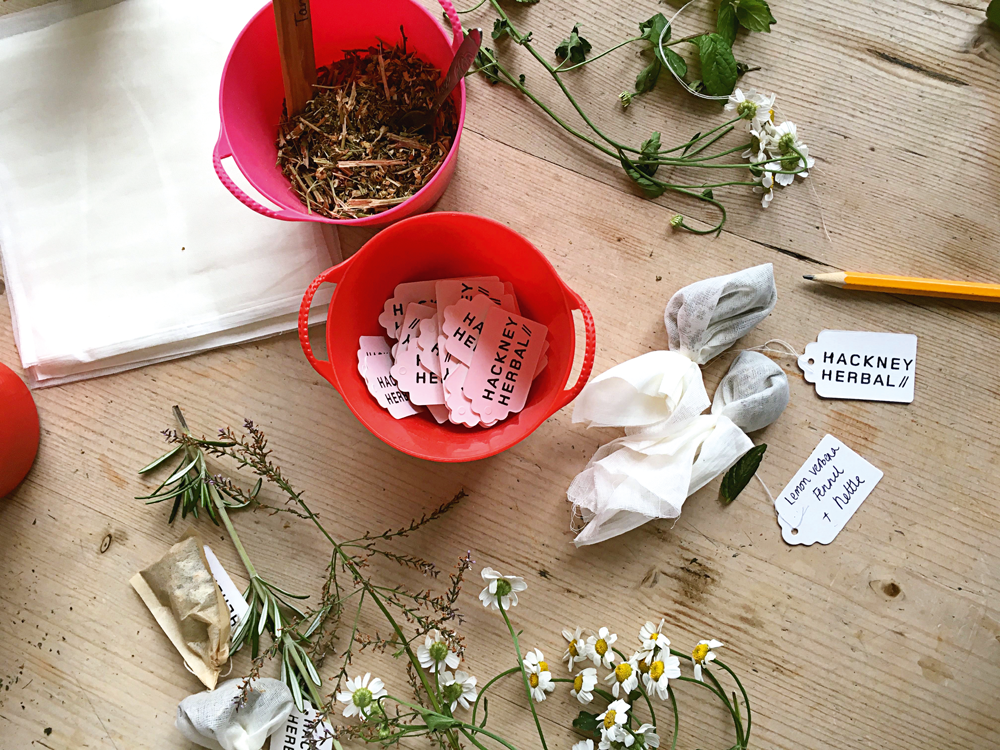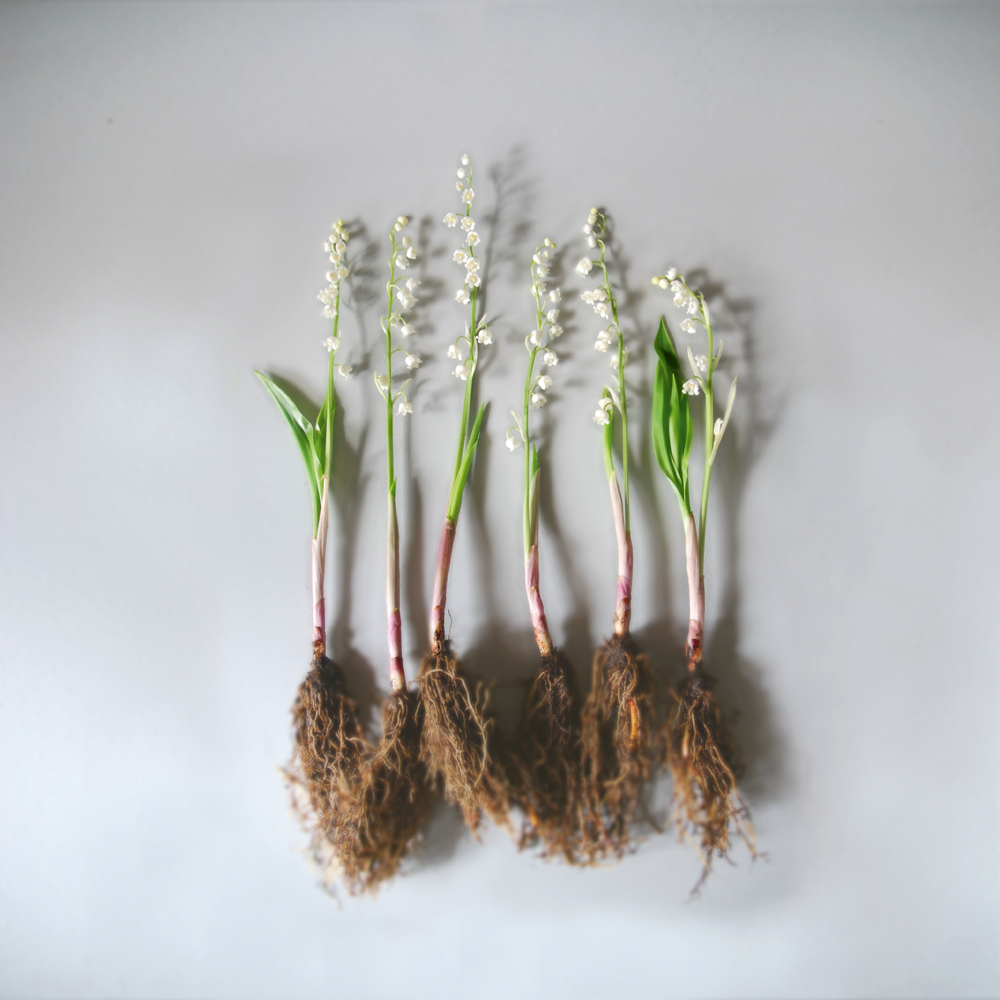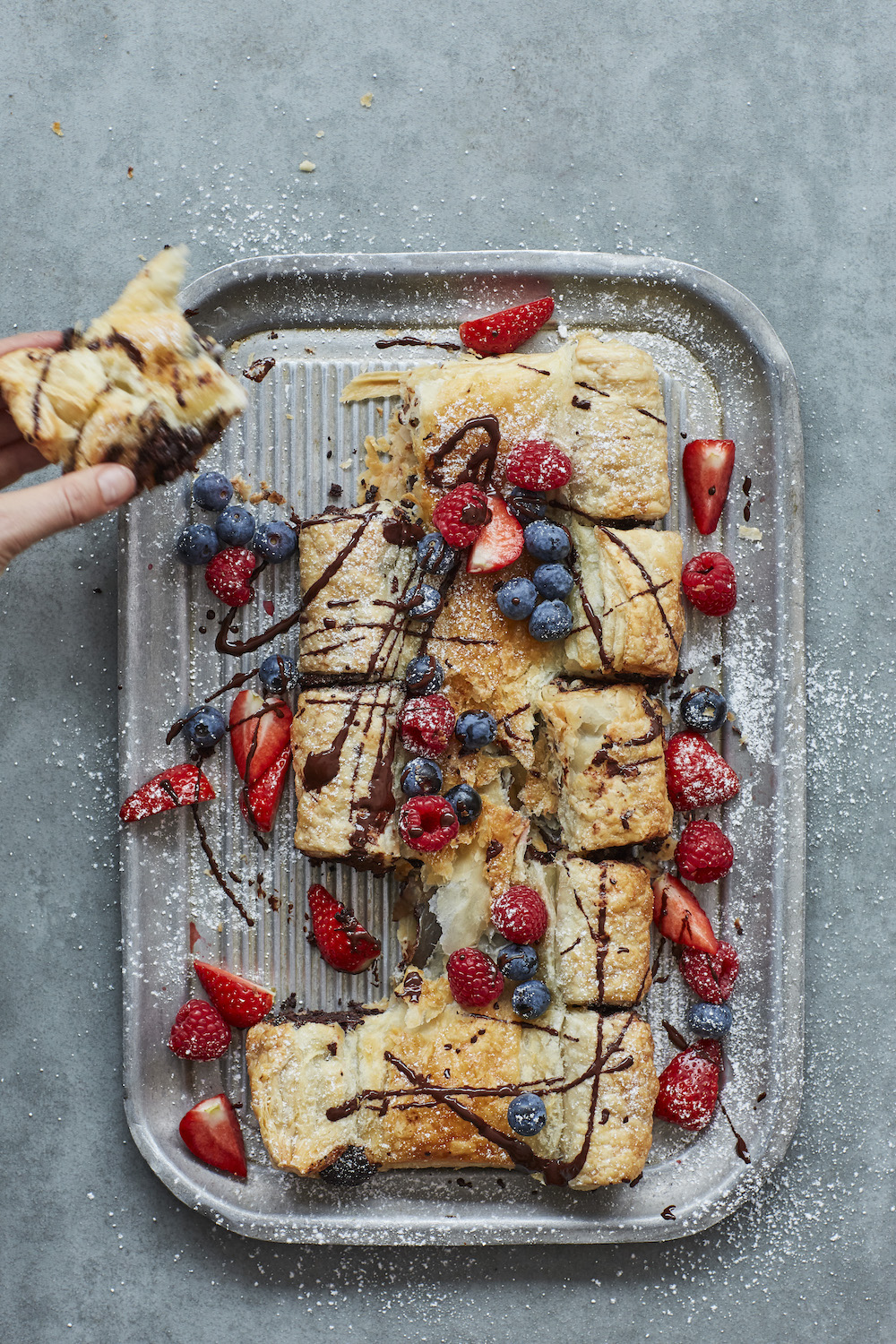“Dancing helps relieve the pain
Soothes your mind, makes you happy again”
Listen to more playlists:
Featured
Blog
Taking Time to Live Well

“Dancing helps relieve the pain
Soothes your mind, makes you happy again”

It's not difficult to fill your house with something flowery all year long. It just takes a little planning and imagination.
On page 106 of May's The Simple Things, Francine Raymond shares her productive small garden in Kent, including this guide to a year-round cut flower guide.
January
Indoor bulbs planted in October come into their own. This is the time to enjoy narcissi, hyacinths, cymbidium orchids and amaryllis.
February
Flowering cherries, sweet box, daphne, helebores and mahonia are fragrant additions to the home. Pussy willow, hazel and birch twigs add interesting structure to any vase.
March
I snip branches of pear before the buds burst: the warmth of the house brings them into leaf and bud.
April
Time for tulips. I like to display them in a row of little glass bottles or bunched together in a crate.
May
One of my favourite plants, auriculas, flower now. They can be brought indoors and displayed on a windowsill out of direct sunlight.
June
Sweetpeas flower in abundance this month. I keep picking to ensure there are plenty of blooms.
July
Lavender is at its headiest now. Once bees have finished with the flowers, I clip off the stems and put them in a big basket.
August
Succulents are at their best in August. I put pots of sempervivums and sedums on the kitchen table.
September
Now is the time to forage hedgerows for berries to display. A few sloe branches and some rosehips add extra colour.
October
I grow pumpkins for decoration, then pile them high in the porch and festoon them with Virginia creeper.
November
I press the heart-shaped leaves of cercis between sheets of paper; and dry seedheads and flowers for festive decorations.
December
I take cardoon heads and little pumpkins and turn them into nightlight holders.

Just because a house is old, it doesn’t have to look old-fashioned. Modern furniture and materials will bring it up-to-date.
Turn to page 98 of May's The Simple Things for more of Rosemarijn's tumble-down farmhouse.

Hanging out the washing is an unusual and surprising thing: a pleasurable household chore. If it’s a fresh morning and the sun is shining, the simple act of pegging clothes on a line before you can lift the spirits and blow away gloominess. As the days extend and there’s more likelihood of sun, it’s also a chance to get outdoors and away from everyone indoors. Doing something methodical provides the opportunity for a moment or two of peaceful reflection – just you, the breeze, a handful of pegs and some billowing sheets. The results are also worth it: the fresh, outdoor smell of line-dried laundry will have you burying your nose in the laundry basket and inhaling deeply. As a method of drying clothes, pegging out is 100% better than piling them in an energy-gobbling, clothes-battering tumble dryer, or heaping them on radiators and leaving them to steam.

Every washing line needs a bag full of pegs nearby for easy pegging out. How to cunningly create one from a child’s polo shirt.
Here’s a clever thing: peg bags are suspended from a hanger so, rather than create a new bag from scratch, why not use an item that is already the right shape and size? Buy a child’s polo shirt (the one above is £3.99, hm.com), or better still use one they have grown out of or no longer like. Turn it inside out, stitch the bottom of the shirt closed about half way down the length of the body, trim surplus fabric, and turn it the right way round. Insert a child’s hanger and fill with pegs. Job done.
Turn to page 111 of May's The Simple Things for more on pegging out.

Treating resilience not as an innate quality, but as a skill to be practised and nurtured, allows you to make lemonade whenever life throws you lemons
The Finnish word sisu refers to a mix of courage, resilience, grit and ‘guts’. In her new book Sisu: The Finnish Art of Courage (Gaia), Joanna Nylund explains how the Finns’ close connection with the weather and nature has played a crucial role in forging the resilient nature of the people. “Living in Finland means living with sharp contrasts,” she says. “It is the extremes that rule our lives – from gritting our teeth and summoning our sisu at the approach of winter to celebrating the eagerly anticipated summer with a devotion to the sun that most closely resembles Celtic worship.”
After that long, hard winter, the Finns’ summer ritual is more about celebrating discomfort than luxury hotels or even glamping. In late June, the country collectively withdraws from everyday life and heads out into nature, spending a few weeks in a mökki (summer cabin). The cabin will have a fireplace and cooking facilities, but rarely central heating – and sometimes no electricity or running water.
“Squatting by the lake to wash your dishes in cold water is so romantic!” says Nylund, who explains how their ancestors grew resilient through hardship. “We are modern people living in a modern world, but at heart we are still rural, and we love our sometimes harsh environment. It has given us our sisu.”
Nature is grounding, it teaches self-sufficiency and spending time in it boosts self-esteem. You don’t have to spend four weeks in a cabin – start by spending a bit of time outdoors every day, read and learn a little about the nature around you, dabble in being more self-sufficient by growing a few veg or salad leaves in your garden, spend a night under canvas, and go from there.
Turn to page 92 of May's The Simple Things for more of our feature on How to bounce back.


Photography: Alan Benson
If you’re not keen on an oversweet cake, this one’s for you. The Mediterranean mix of olive oil, rosemary and lemon is sensational
5 eggs, separated
165g caster sugar, plus 1 tbsp to sprinkle
1⁄4 tsp salt
185ml olive oil
Juice & finely grated zest of 1 lemon
1 tsp finely chopped fresh rosemary
150g plain flour, sifted
10 apricots, halved & stones removed (or tinned apricot halves, drained)
to serve (optional)
300ml soured cream or crème fraîche
30g icing sugar, sifted
1 tsp vanilla extract/essence or vanilla bean paste
1 Preheat oven to 170C/Fan 150C/Gas 3. Grease the ring of a 20–22cm springform tin, then turn the base upside down, so it no longer has a lip. Place a piece of baking paper over it, then clamp the ring around it to secure.
2 In a medium mixing bowl, whisk the egg whites with an electric mixer on medium speed until just foamy. Add 55g of the caster sugar in two batches, whisking well between each addition, until soft peaks form. Set aside.
3 Combine the egg yolks, remaining (110g) caster sugar and salt in a medium mixing bowl, and whisk with an electric mixer on high speed until pale and thick. Gradually drizzle in the olive oil, whisking on high speed until all of it has been used. Add the lemon juice and zest, rosemary and flour, and stir with a whisk until just combined.
4 Whisk in one-third of the egg whites to loosen the mixture, then add the remainder and stir very gently with the whisk until combined. Pour the batter into the prepared cake tin, and arrange the apricot halves in concentric circles on top, working from the outside in.
5 Sprinkle the extra tbsp of caster sugar evenly over the surface, and bake for about 50 mins, or until an skewer inserted into the centre comes out clean.
6 To make a vanilla cream, if using, combine the cream, icing sugar and vanilla in a medium mixing bowl and whisk by hand or with an electric mixer until floppy peaks form.
7 Once the cake is cooked, rest it in the tin for 5 mins before releasing the ring and sliding the cake onto a wire rack to cool. Leave to rest for about 30 mins before slicing and serving – warm works for this cake – with your choice of dolloping cream!
Recipe from Poh Bakes 100 Greats by Poh Ling Yeow (Murdoch Books).
Cake in the House is our monthly recipe feature - get a cake recipe every month in The Simple Things!

On 10 June walk to mark 100 years of votes for women. With handmade banners and wearing the suffragette colours of green, white and violet, marchers will form a river of colour through London, Cardiff, Belfast and Edinburgh. Details at processions.co.uk
PROCESSIONS is a once-in-a-lifetime opportunity to take part in a mass participation artwork to celebrate one hundred years of votes for women. In 1918, the Representation of the People Act gave the first British women the right to vote and stand for public office. One hundred years on, we are inviting women* and girls across the UK to come and mark this historic moment as part of a living portrait of women in the 21st century.
On Sunday 10th of June, women and girls in Belfast, Cardiff, Edinburgh and London will walk together as part of this celebratory mass participation artwork. Wearing either green, white or violet, the colours of the suffrage movement, the PROCESSIONS will appear as a flowing river of colour through the city streets.
One hundred women artists are being commissioned to work with organisations and communities across the UK to create one hundred centenary banners for PROCESSIONS as part of an extensive public programme of creative workshops.
Sign up: processions.co.uk
DON'T MISS: Next month, we look at why women march, plus how to make your own banner or pennant. All in the June issue (on sale 30 May).

Illustration: Kavel Rafferty
Why do we knock on wood? We’ve been leafing through the history books to trace the roots of this belief
Don’t want to lose this good thing – as the song goes – well, you better knock, knock on wood. We’ve been using the phrase since at least the 19th century to protect our good fortune but theories as to why link it back even further. It’s thought that in pagan cultures, it was used either to call on the protection of spirits, or scare away malignant forces.
A Christian interpretation links it to the wood of Christ’s cross – as well as a Jewish one, recalling the coded knocks of escape networks during the Spanish inquisition. A later interpretation links to a child’s game of tag, and the knocking on wood that means “safe”, made more plausible by the fact the first written reference to touching wood is as recent as 1899. Nevertheless, variations of the superstition appear in many different cultures. Italians, for example, instead will find themselves “touching iron”.

Project & photography: NATMADY/HACKNEYHERBAL
A soothing cuppa is in the bag, when you make your own. The appeal of this project goes beyond having something nice to sip: the touch and smell of choosing your herbs, even before the tastebuds kick in, make it a real sensory experience – something to savour.
You will need:
Unbleached muslin fabric (try souschef.co.uk or johnlewis.com), or you could buy readymade self-fill tea bags from dotboutique.store)
Cotton thread
1 tsp of dried herbs
1 Cut unbleached muslin fabric into squares roughly measuring 10x10cm.
2 Choose between 2 to 4 dried herbs to mix and place in the middle of the square. You need about a teaspoon in total.
3 Gather the corners of the square together and tie the teabag up using cotton thread.
4 Infuse in hot water for five minutes and drink. You can empty out the spent herbs and re-use the muslin again after rinsing it.
SOME BLENDS TO TRY
Rosemary, peppermint & nettle An uplifting blend to aid focus and concentration.
Echinacea, yarrow & sage A restorative blend to sip when you have a sore throat or cold.
Lemon verbena, rose & skullcap A relaxing combination to enjoy before bed.

With delicate, nodding blooms, lily of the valley is a popular choice for brides. Which doesn’t mean the rest of us shouldn’t enjoy them in the house. Their ephemeral nature means they won’t last long as cut flowers, however.
“Keep them out of sunlight in a miniature mixed posy or as a single bloom in a votive holder,” says Ellie Marlow, florist at Catkin & Pussywillow. “Or dig up and display with roots intact in a slim, glass, bud vase.”

Photography: Kirstie Young
This Korean condiment is made by fermenting seasonal veg with fish sauce and spices. Delicious eaten as a pickle, it’s also fantastic in a toasted cheese sandwich.
Makes 1 large jar
100g spring onions
115ml fish sauce
235ml water
2 tbsp rice flour
4 tbsp cayenne or Korean chilli powder
2 tbsp sugar
1 tbsp sesame seeds
3 tbsp minced garlic
2 tbsp minced ginger
1 Into a large bowl place the spring onions and fish sauce, and mix thoroughly; leave it all to sit
for an hour.
2 Put the water and rice flour into a small saucepan and heat, stirring, until it starts to boil. Remove from the heat and leave to cool.
3 When the mixture has cooled, add the cayenne or chilli powder, sugar, sesame seeds, garlic and ginger. Pour this over the spring onions and then use your hands (gloves are advised!) to make sure each onion is coated in the mixture.
4 Tie each onion into a knot and place it in a large sterilised jar, then tip over the rest of the sauce and seal. The jar should then be kept at room temperature. It will start to ferment almost immediately and can be eaten after a couple of days, but the flavour will develop over the next few weeks. Will keep in the fridge for up to three months.
Turn to page 34 for more onion recipes from Lia Leendertz.

Things you might want to do this month (no pressure!)
What would you add? Come over and tell us on Facebook or Twitter.

The Butterfly Brothers aka Jim and Joel Ashton have been designing, building and taking care of wildlife gardens, often in urban areas, since 2006. Find out more in our feature on page 116 of May's The Simple Things or read on to discover 12 ways to attract wildlife to your patch.
1 A patch of nettles can support more than 40 kinds of insects, as well as birds, which come for the autumn seeds. They’re also a food source for peacock butterfly larvae.
2 A feeder close to shrub cover is a safe place for birds to feed.
3 Hoverflies love the flowers of the native guelder rose (Viburnum opulus), and birds, its red berries.
4 Rowan trees are valuable to a number of moths, their caterpillars feeding on the leaves; the spring flowers attract pollinating insects, while birds love its autumn berries.
5 A variety of sprawling trees, shrubs and climbers attract foraging and sheltering birds, as well as provide potential nest sites.
6 A small pond in a sunny spot is a haven for all kinds of wildlife, including frogs, toads and newts.
7 Hops are a rich source of nectar for all kinds of insects, while the dense growth provides birds with shelter and nesting opportunities.
8 Long-flowering valerian is a good steady source of nectar for bees, butterflies and moths.
9 Essential for the humans: a seating area from which to watch the creatures’ comings and goings.
10 An alder tree attracts birds such as goldfinches and siskins with its seeds; caterpillars love the leaves.
11 A lawn left to flower is a haven for bees and other pollinators.
12 Open fences let hedgehogs roam.

If you’re partial to a pain au chocolat, you’ll love this effortless version, ideal for feeding the troops on a long weekend. This recipe uses plant-based milk and cream, but you can, of course, use dairy.
Serves 4–6
100g dark chocolate
21⁄2 tbsp icing sugar, plus extra to dust
2 sheets ready-rolled puff pastry
2 tbsp plant-based milk
Handful each of strawberries, blueberries and raspberries
Oat or soy cream, to serve
1 Preheat oven to 180C/Fan 160C/Gas 4. Break up 75g of the chocolate into a heatproof bowl and melt over a pan of barely simmering water (don’t let the bowl touch the water), stirring occasionally with a wooden spoon. Mix in the icing sugar, until lump-free, then remove the pan from the heat.
2 Lay one sheet of pastry on a lined baking sheet. Pour over most of the melted chocolate and spread it out, leaving a 2cm gap around the edges. Lay the second sheet of pastry flush on top (you may need help with this bit). Gently press the two sheets of pastry together all the way round the edges.
3 With a sharp knife, make four evenly spaced 5cm cuts into the long edges of the pastry. You should be left with a 3cm strip of pastry down the middle with five sections of pastry either side.
4 Cut the remaining chocolate into 10 chunks and pop one chunk in the middle of each section of pastry. Roll to encase the chocolate, taking care not to cover the middle section, and press to seal. Brush with the milk and bake for 30–35 mins until golden and crisp.
5 Scatter the berries over the middle section, drizzle over the reserved melted chocolate, and dust with icing sugar. Serve hot, with cream for pouring.
Recipe from Bosh! by Henry Firth & Ian Theasby (HQ HarperCollins)

Illustration: Kavel Rafferty
Seek immediate medical attention if their tongue swells, they’re having trouble breathing, blurred vision or nausea, or you see skin rash or flushing.
WHILE AWAITING MEDICAL ATTENTION:
Check to see if carrying an EpiPen.
Remove the stinger. Being careful not to squeeze the venom sac at the stinger’s base, gently drag a fingernail edge or a credit card across the stinger in the direction opposite from its entry.
AT-HOME FIRST AID
After extracting the stinger, wash with soap and water before finding relief.
Mud and freshly chewed plantain leaf help, or try baking soda (mix with vinegar into paste), onion (lay fresh slices over wound) or dip a clean cloth in milk, wring out, fold and apply.
Two drops of lavender essential oil are also effective applied topically.
Adapted from The Natural First Aid Handbook by Brigitte Mars (Storey Publishing).

You’ve got to love a long weekend. That extra (sunny) day is alive with possibility. Will you gather friends and family around a table, cycle on country lanes between spring hedgerows in bloom, or escape for a few days in a woodland retreat? Let your projects blossom and grow – making plans is part of the fun. But don’t forget to leave time for the little things, too; there’s pleasure to be had from watching washing flap in the breeze or noticing a caterpillar wiggle up a stem. Being outdoors isn’t always about being active.
Get hold of your copy of this month's The Simple Things - buy, download or subscribe.
View the sampler here, buy back issues or try our sister mag, Oh Comely

There's much more to boredom than watching paint dry, says aficionado of the dull, James Ward
Boringness is easy to embrace. Slow down. Read Species of Spaces by George Perec. Go for a walk without a destination. Write things down. Don’t start with an end goal in mind, just see where things take you. Once you’ve landed on something, go and read the Wikipedia page about it. Then look at what else the people who edited that page also edited and read those, and so on. Before you know it, it’s three weeks later and you’re obsessed with something you didn’t even know existed at the start of the month.
When you’re on train or a bus, everyone is in a cocoon staring at their phone. I’m loath to be judgmental about people’s relationship with technology. Someone could be playing Sudoku, the person next to them could be reading the New York Times, or a new novel. Someone might be listening to a podcast about wooden palettes or emailing their best friend on the other side of the world. What we do need sometimes is time out from the constant updates and notifications. This is what stops you exploring. Having a day off from that is good.
I always say about Boring, that “nothing of any importance will be discussed”. The conference is a day away from people’s hot takes, where things are just a little bit smaller.
Turn to page 92 of April's The Simple Things for more from James Ward and his Boring Conference.

Illustration: Kavel Rafferty
Reusing old or damaged bins for container gardening is a wheelie good idea
ALL YOU NEED:
An old wheelie bin
Stones or gravel
Seeds: this works with growing (or beginning growing) almost anything
Soil
1 Drill four large holes in the bottom of the bin for drainage.
2 Add stones and gravel to the bottom of the bin, how much you need will depend on what you’re planting and how much soil they’ll need.
3 Fill with compost to just over halfway.
4 Create holes in soil for your seeds, spacing dependent on seed package instructions..
5 Keep it well watered, and add fertiliser regularly.

Illustration: Kavel Rafferty
Seek immediate medical attention if the individual is wheezing, not getting enough oxygen or has signs of cyanosis: bluish lips and nail beds, pale colour. While you wait for medical attention:
FOLLOW THE DOCTOR’S INSTRUCTIONS.
Administer any medication that was prescribed by the individual’s doctor.
HAVE THEM SIT UP STRAIGHT IN A CHAIR.
Ask them to lean forward and rest their forearms on a table, elbows pointing away from the body.
OFFER A BEVERAGE.
Coffee, black tea or a hot liquid like clear tea can help dilate the airway. If available, lobelia tea (1⁄4 tsp of herbs or 5 to 10 drops of tincture to 1 cup warm water) may help.
APPLY A COLD-WATER COMPRESS TO THE CHEST.
In some cases, it may stop the attack.
Adapted from The Natural First Aid Handbook by Brigitte Mars (Storey Publishing).
We celebrate slowing down, enjoying what you have, making the most of where you live, enjoying the company of of friends and family, and feeding them well. We like to grow some of our own vegetables, visit local markets, rummage for vintage finds, and decorate our home with the plunder. We love being outdoors and enjoy the satisfaction that comes with a job well done.